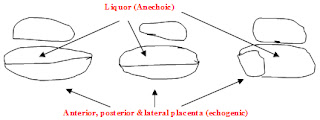COLLAPSE
|
Before delivery
|
After delivery
|
After 3rd stage
|
|
Rupture uterus
|
PPH – During 3rd
stage
|
Ruptured uterus
|
|
Amniotic fluid embolism
|
|
Uterine inversion
|
RUPTURED UTERUS
History
- Past caesarean section
- Grand multigravida
- Multigravida given oxytocin during labour
- Almost never in primigravida - except following manipulations or previous uterine scar e.g. myomectomy





.bmp)